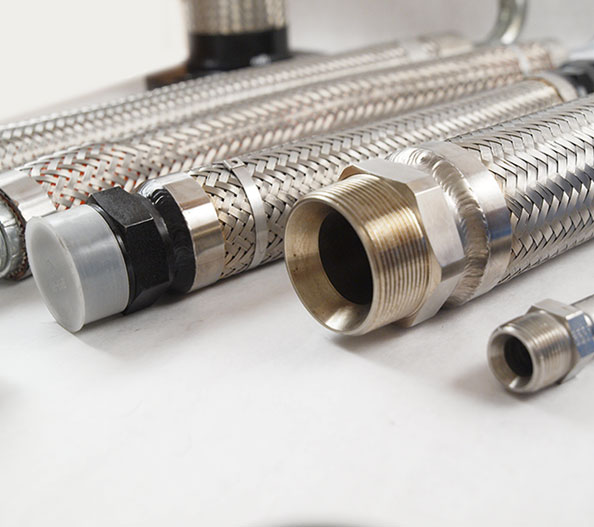Champagne gold hose clamp
The hose connector is the key part to connect the equipment and the hose. In the production and assembly of the traditional hose connector, the outer rubber of the hose needs to be peeled off first, and then pressed and formed with the sleeve and the connector core. However, when stripping the hose, there is often the possibility of damaging the hose. How to avoid leakage has become the key to the design of hose joints.
The hose connector is mainly composed of a connector core, a sleeve and a connector, as shown in Figure 1. First of all, we start with the rational design of the hose connector. The focus of the hose connector design is the design of the connector core and the sleeve. The two are combined with the hose through the crimping method to form the hose assembly.
Joint core design

The part where the joint core and hose are crimped is the key place to ensure no leakage of the connection. In the design of joints, designers often pay attention to the design of the length, structural shape, wall thickness and other parts of the crimping part of the joint core, but ignore the design of details such as chamfering and roughness of the crimping part of the joint core. These seemingly simple places However, it plays an important role in sealing in actual use.
1) Chamfer
The connector core is in direct contact with the hose internal glue, and the design should not have sharp corners, burrs, etc. As shown in Fig. 2a chamfer 1, all intersections of the connector core must be rounded, and the radius of the corner is 0.2 ~ 0.5mm. If the joint core is not rounded, the inner core layer is easily punctured or damaged when the joint core is inserted into the hose, resulting in early oil leakage of the hose assembly.
Similarly, the chamfer 2 also plays a sealing role. When the joint is crimped and formed, the hose inner pressure is compressed, and part of the inner rubber is squeezed toward the chamfer 2 to form a seal at the chamfer 2 and effectively increase the hose assembly. Tightness
2) Tooth profile roughness
Since the joint core and the inner rubber layer of the hose are the key to ensuring sealing, the outer surface of the joint core should be strictly controlled for roughness. According to actual production experience, Ra3.2 is usually required.
3) Tooth profile outer diameter
When designing the joint core, in order to ensure an interference fit between the joint core and the hose during assembly, the outer diameter of the joint core should be slightly larger than the inner diameter of the hose during the design. Depending on the inner diameter, it can be selected from 0.5 to 1 mm. All the tooth cores of the traditional stripping type have the same height, but in production and assembly, it is often difficult to assemble. For the non-stripping hose joint core, we design the tooth shape to be unequal height, the last tooth diameter of the joint core D1 is smaller than other tooth shapes D by 0.1 ~ 0.3mm, as shown in Figure 3, which effectively solves the assembly problem.

